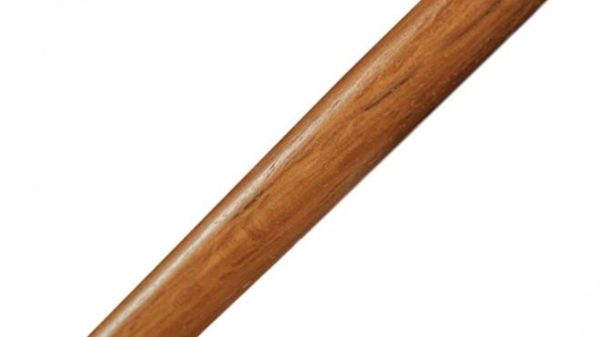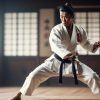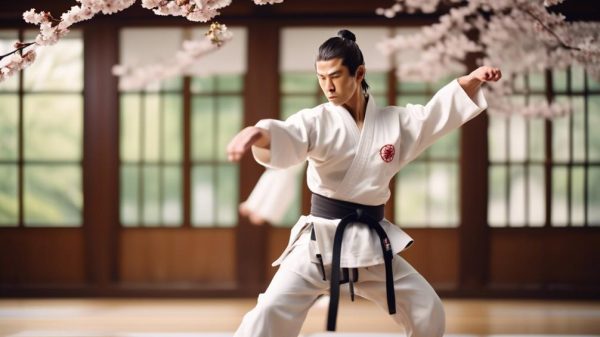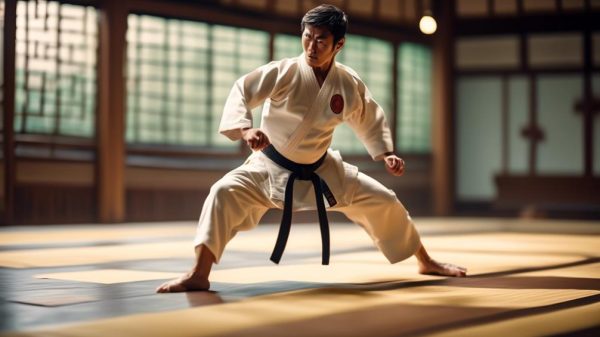There are hundreds of cool martial arts styles from all over the world. They mix punching, kicking, throwing, wrestling, weapons, and even gymnastic-like moves.
Besides being fun to learn and great exercise, martial arts teach useful self-defense and self-discipline.
Throughout your life, it’s good to try many different types of fighting arts to find one or more you really like.
Studying martial arts is about the life experience too — the countries they came from, the philosophies behind them, and the instructors you’ll meet.
This article lists 10 must-sample martial arts that everyone should squeeze in before they pass away.
Of course, health issues might stop rough contact. Believe me, I know!
But otherwise, make these arts a bucket list goal. The list covers old and new styles – some with flashy moves, others with practical tactics. At least one will end up a keeper you’ll stick with and maybe even master!
Note: I’d add learning Boxing as well, but I’m sticking with “Martial Arts” here, which many people might not include Boxing within.
10: Krav Maga
This modern style was invented by the Israeli military to defend against armed attacks. The name means “contact combat” in Hebrew. Krav Maga preps for real street fight dangers, not sport points.
Unlike traditional martial arts, Krav has no kata forms or graceful moves. It’s all about inflicting damage to vulnerable soft targets like the eyes or throat. And it teaches weapon defenses against knives, guns and sticks.
Krav uses simple, explosive counterattacks – anything to neutralize threats quickly. It mixes striking, throwing and grappling. Classes feel intense with little bowing tradition – just hardcore combat scenarios.
Give Krav Maga a test if you might need to defend against multiple muggers or a surprise attack.
The urban tactics could save your life, but have little discipline aspects. It may be too brutal or scary for some.
9: Muay Thai Boxing
Muay Thai is a dynamic striking style from Thailand using 8 body points. Known as the “Art of 8 Limbs,” it adds knee and elbow techniques to standard punches and kicks.
Stance and movement in Muay Thai stay upright with lots of footwork. It applies close-range hitting in the clinch too – using knees to tender midsections. Matches play out with an ebb and flow, hunting for openings.
Many top fighters respect Muay Thai for its power and effectiveness. It also builds excellent conditioning, balance and coordination. Just beware that sparring is full contact to the head and body.
If you like aerobic, technical kickboxing sports, Muay Thai is a rush. Thailand’s national sport will make your limbs lethal weapons with its explosive strikes and knees from the clinch.
Shane from Fight Tips has a great tutorial below that you should check out.
8: Capoeira
With its dance-like style, Capoeira is one of the most unique martial arts. It began in the 16th century when African slaves in Brazil used it to hide self-defense training.
Capoeira uses acrobatics, music and deception to outwit opponents. It features constant movement in a low crouching stance, dodging attacks. Players often form a circle called a “roda” and take turns improvising attacks, fakes and escapes to an ever-present beat of drums and songs.
The flowing style keeps your heart rate up through an intense yet artistic workout. You develop rhythm, flexibility and sly perception. Capoeira melds athletic skill, theatrical flair and combat psychology.
Give the “game” of Capoeira a go if you want a physically demanding martial art that feels more like musical expression. It takes creativity and stamina. Avoid if you desire a more formal progress path.
7: Karate
6: Tae Kwon Do (Taekwondo)
When you picture martial arts, chances are you see Karate. Developed in Okinawa then Japan, Karate became first to spread internationally.
Known as the “empty hand” art, Karate uses precise, powerful punches, kicks, blocks and strikes without weapons. Stances stay rooted with lots of core rotation.
It includes many traditional bowing customs and Japanese terms.
All levels spend hours rehearsing kata – sequenced motions that teach form, position and timing. Sparring then applies the moves. Belts show progress from white to black master.
Give traditional Karate a try if you like Japanese structure and abalance of physicality, self-awareness and discipline.
The strict protocols aren’t for everyone. But Karate provides a proven battle-tested fighting method.
5: Kung Fu
China’s ancient martial arts, Kung Fu refers to a variety of fighting styles. Over centuries it became a complete mind-body life approach.
Kung fu styles mimic clever animals and apply weapons like swords, staffs or spears too. The flowing forms teach to evade, trap and redirect – not just overwhelming force. Stances stay low with smooth footwork suitable for any body shape.
Big systems like Wing Chun, Tai Chi and Shaolin each have unique theories, training tactics and hundreds of forms. Weapons-wielding Wushu spins and tumbles for dramatic effect. Pick your focus – it may take decades to grasp one system fully!
The deep, holistic wisdom within Chinese Kung Fu makes it a must-sample martial art before you die. But its vastness almost requires devoting to just a single style for meaningful progress in skill. First explore, then go deep!
Here’s a good beginners course for Wushu Kung Fu.
4: Judo
Judo focuses on off-balancing and throwing opponents to the ground. Created in the 1880s, it stemmed from Japan’s ancient grappling art Jujutsu.
Judo stays upright with gripping for leverage. It teaches timing and reading energy flow to execute hip throws, leg sweeps and shoulder rolls using an attacker’s force against them. Randori sparring starts from neutral grips.
Once grounded, Judo applies arm locks or chokes to defeat rivals. Matches aim to cleanly throw foes onto their backs. Refined technique beats strength. Formal rules forbid striking while promoting respect.
Give sport Judo a whirl if you enjoy close quarters grappling tactics with precision. It develops coordination, balance and grit.
Just know there’s a steep learning curve to get comfortable being hurled through the air!
3: Wrestling
Along with boxing, Wrestling is one of the oldest combative sports – first depicted over 5000 years ago! Nearly every early society included wrestling in military training too.
Folk styles like Freestyle, Greco-Roman and Catch Wrestling use leverage and power to takedown and pin on mats. Wrestling develops explosive strength, unmatched cardio and bulldog mental grit.
With endless wrestling combinations, learning proper technique takes vast repetition. Drills instill shooting reflexes, setups and counters to opponents’ moves. No wonder wrestling lays the foundation for most mixed martial arts.
At least sample wrestling’s intensity even if you don’t plan to compete.
The ultimate anaerobic workout builds true functional fitness, balance under pressure and mental toughness that transfers to life. Just brace for impact!
Shane at Fight Tips has a great introduction video for Wrestling/Grappling drills.
2: Sambo
Developed to improve the Russian military’s hand-to-hand skills, Sambo blends the strongest techniques of wrestling and judo.
Sambo allows leg locks and chokeholds forbidden in sport Judo. It uses constant attacking combinations that transition between standing and ground fighting. Pace stays energetic, seeking domination.
Well-rounded abilities develop in takedowns, throws, strikes, submissions and survival. Sambo transfers effectively to MMA, too. Uniforms include jackets or kurtkas to enable solid grips.
Give Sambo a test if you’re an aggressive grappler keen to manage diverse positions, stresses and attacks. It mixes power, speed, transitions and psychological resilience with a nation’s pride.
1: Brazilian Jiu-Jitsu
If your aim is to control larger opponents from vulnerable positions, Brazilian Jiu-Jitsu is what you need. BJJ rose to fame proving technique defeats brawn.
BJJ came from Judo’s ground game then modified for the ultimate bottom grappling game. It uses leverage, timing, precision and persistence to gain dominant holds, create openings and achieve mounts or back takes for fight ending submissions.
Every class begins with prescriptive step-by-step warm ups to prevent injuries during hard, sweat-inducing practice. Advanced students flow without strength, calmly shifting positions. Outsiders shake their heads wondering how they make it look so easy!
While some martial arts are great for sport, others for discipline or fitness, Brazilian Jiu-Jitsu has unrivaled street applicability. Give BJJ a go to experience a flowing chess match demanding pitch-perfect technique.
Shane from Fight Tips has a good video with Stephen Kesting.
Final Words
That wraps our list of 10 must-try martial arts to experience before your time is up! Of course this just scratches the surface of arts to sample.
Consider adding Filipino stick and knife work, Russian Systema or Chinese Wing Chun for even more variety.
Hopefully exploring these diverse martial styles leads you to find one or two that spark your long-term passion.
Dig deeper into those favorites to harness their style-specific wisdom for self-mastery.
Stay open and keep training throughout your lifetime. Mixing multiple martial arts multiplies your capabilities.
Blend techniques that amplify your natural strengths and talents for maximum impact!
With an open mind and persistent practice, your best art awaits.









